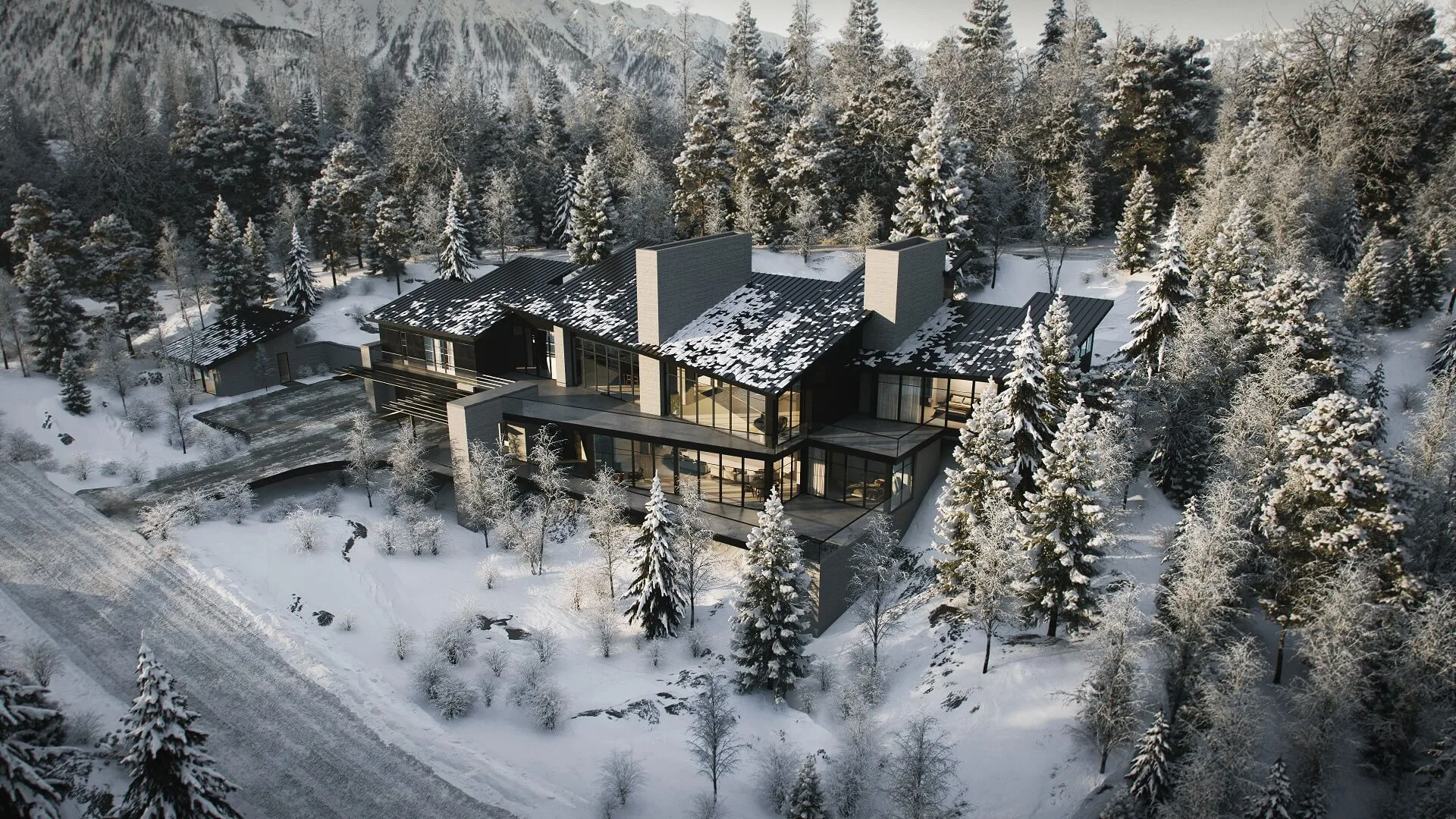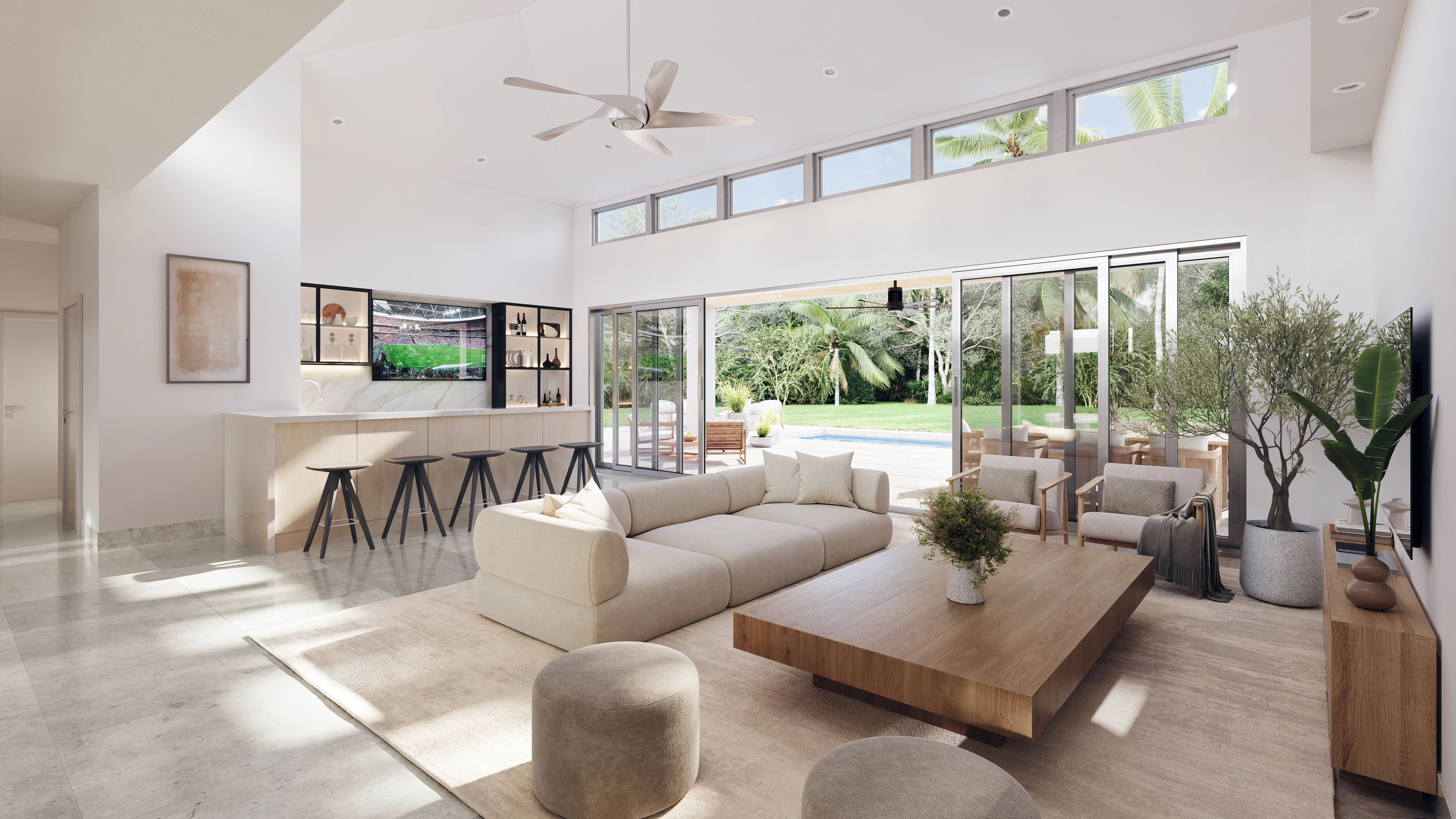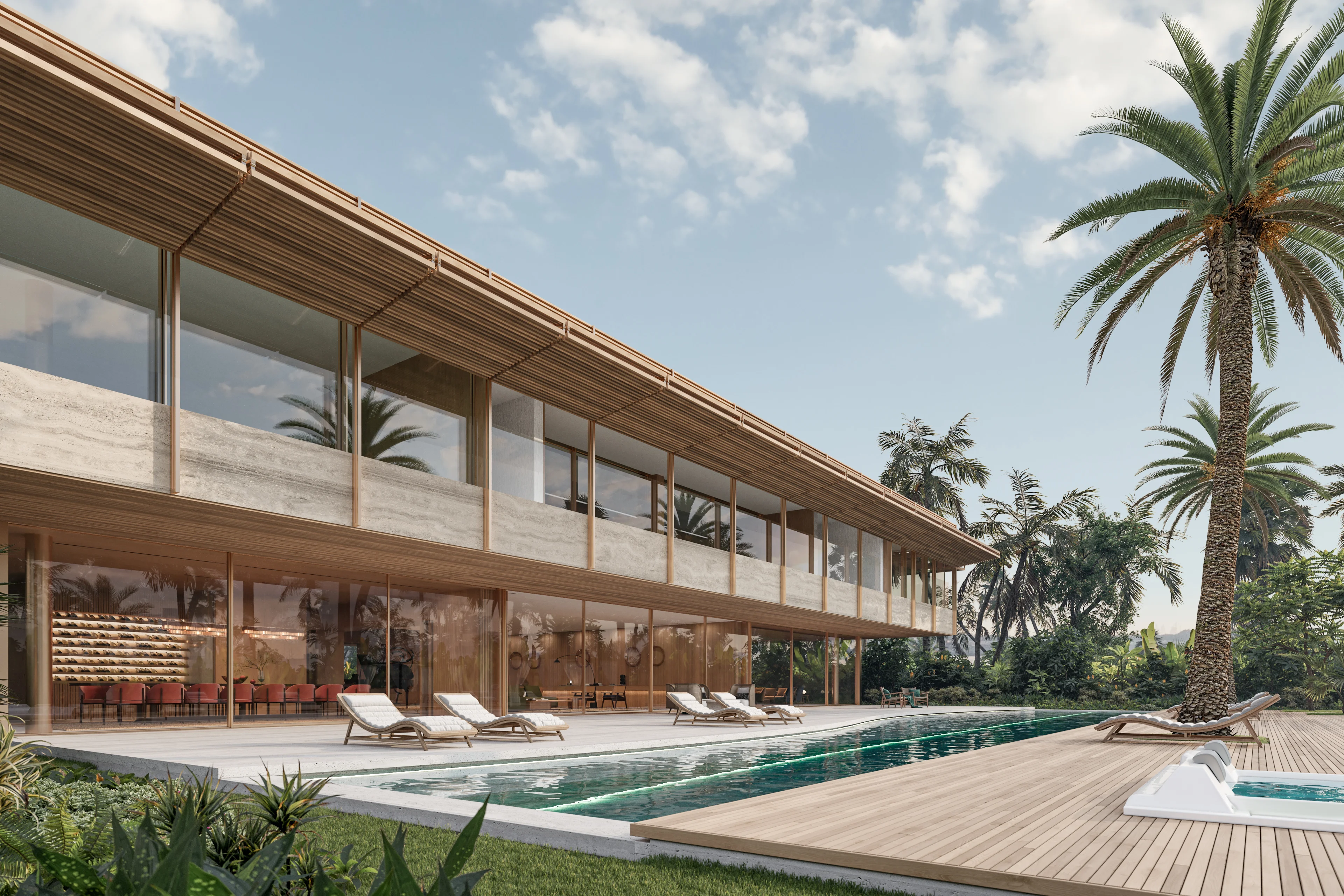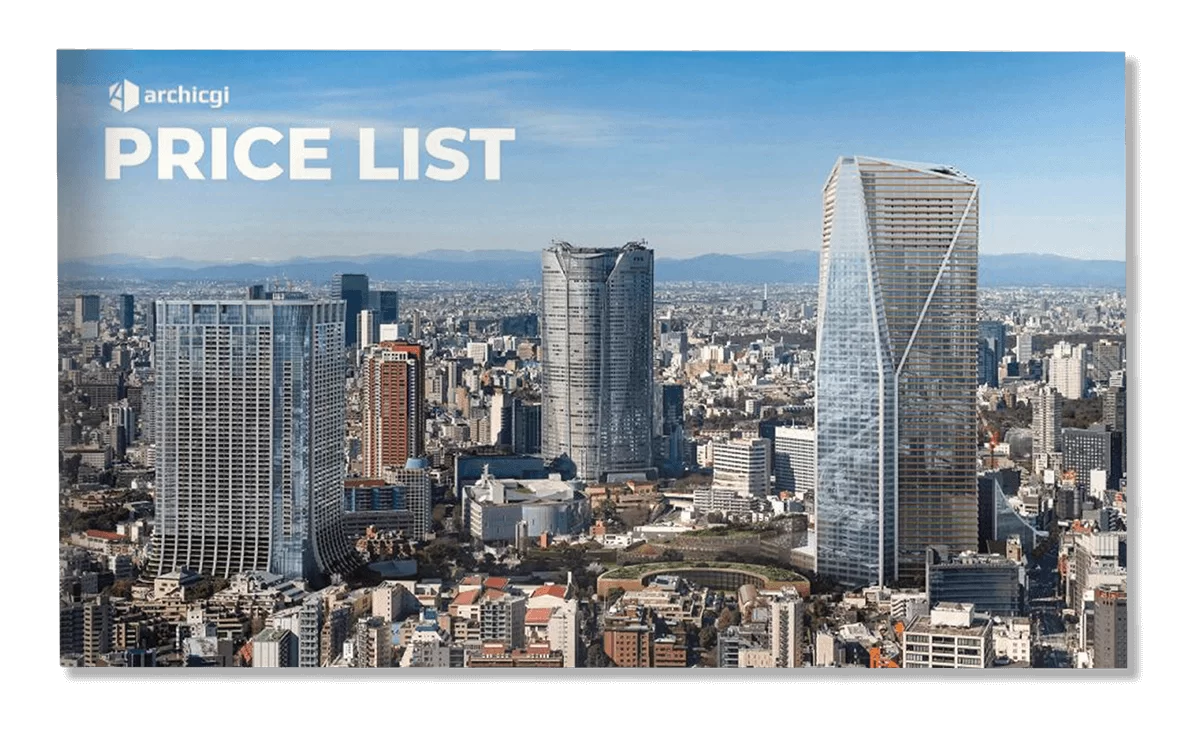How 3D graphics work for architectural businesses is astonishing. They have literally transformed the industry by empowering its marketing, conveying and highlighting the architect’s creative ideas. And it’s because of the flexibility of 3D graphics that professionals order photoreal imagery from a 3D rendering company.
3D computer graphics work with virtual objects called 3D models. These models have volume and a defined position in space. In general, they are created in two ways.
The first way is through 3D scanning. This is the automated creation of 3D models representing real objects. It helps architects reduce geodetic work and quickly obtain a 3D model of a building.
The second way is through 3D modeling. This is the process of making a virtual representation of an object from scratch using 3D modeling software. Most 3D models used for architectural visualization are created this way.
To appear as 2D images on the screen, 3D models must be processed by a 3D rendering engine. The engine then generates a still image or video. As a result, architecture specialists get visuals they can use for ads and presentations. This process is called 3D rendering for architects.
Moreover, 3D modeling and rendering give architectural businesses another powerful marketing tool – 3D walkthroughs and panoramas.
The unique benefit of 3D modeling and rendering for architects is that it allows for the creation of any object, whether or not it exists, with any level of preciseness and photorealism. This allowed architects and designers to convey their visions to clients as if the builders had already finished their work.
So, it’s no wonder that 3D imagery finds plenty of uses in design-related spheres. Learn 5 ways 3D graphics work for architecture firms’ commercial success and brand image.
#1. How 3D Graphics Work for Design Creation

3D modeling with architectural CAD software allows for an easier and faster design process. As the model changes, the 2D drafts update automatically. This helps architects keep the documentation accurate and up to date.
Some CAD tools include built-in 3D rendering options or offer 3D visualization plugins. Architects use these tools for project review. By rotating and scaling the model in real time, they can quickly identify what needs improvement. This may be a large aspect such as the use of space, or a small detail such as a misplaced beam.
However, these views are schematic. They provide information but lack context. They also fail to capture attention. By contrast, 3D computer graphics software such as 3ds Max makes it possible to create a strong visual impact. In the next section, you will see how professional 3D visualizations help architects deliver striking design presentations.
#2. How 3D Computer Graphics Empower Presentation

In architectural presentations, 3D graphics work for the client’s understanding of the architect’s vision. However precise the drafts can be, and however spectacular a hand-drawn render looks, it’s 3D visualization that has all the advantages of artistic photography. It immerses a viewer into the project. It shows the client exactly what they will get. All the splendor of the design, and all of its practical benefits are here in the image – how can you not fall in love with this amazing project?
For architectural renderings to look as realistic as possible, 3D artists use such rendering plugins as Vray and Corona. Either of them helps create still and animated 3D renders with strikingly lifelike materials, vibrant colors, vivid lights, and shadows. 3D visualization post-production tricks help amplify the emotional impact by forming the most advantageous atmosphere and livening up the picture with people and cars. By doing so, the CGI professionals put the building into the context that sells best.
Take your design presentation to a new level with interior rendering
#3. How 3D Rendering Works for Construction

Architects and interior designers can give construction workers 3D visualizations. These visuals give builders a clear picture of the design and guide them through each stage of the work. The renders serve as reliable references that make it easier to follow the plan on site.
As a result, 3D renderings for interior designers and architects make projects run more smoothly. Mistakes are easier to correct, and less material goes to waste. Also, clear visual references improve cooperation between builders and designers.
#4. How 3D Graphics Work for Online Marketing

Smart digital marketing allows architecture professionals to achieve a stable client flow and quote higher prices for their work. 3D visualizations make great visuals for social media campaigns, communicating the value of architectural projects and entertaining viewers.
1) How 3D Rendering Works for the Website
With the help of 3D graphics, architects can get stunning visual materials to strengthen their websites. 3D renderings, virtual 3D tours, and 3D animations attract the attention of prospects and work like a 24-hour salesman.
CGI can also enhance an architectural portfolio. No matter how far a building is, it can be shown with 3D graphics. Even if it is only a concept, images and 3D walkthroughs can turn it into a client magnet for the architect. Contact a 3D architectural animation company if you need spectacular 3D videos for your self-branding.
2) How 3D Graphics Work for SMM
As web surfers spend plenty of time on social networks, those have become a place where businesses meet clients. 3D graphics, both still and animated, help architecture professionals post more catching and engaging content. Moreover, 360° panoramas on Facebook are all the rage nowadays, adding more interactivity and diversity to the content for even higher conversion.
3) How 3D Rendering Works for Email Marketing

3D graphics help architecture firms create attention-catching emails and demonstrate the advantages of their design solutions. Even if an addressee reads every single word in an email, it’s the imagery that inspires decision and action. Thus, 3D rendering works for architectural email marketing, allowing it to get more attention, convey the value of the services, entertain the reader, and get noticed.
#5. How 3D Graphics Work for Traditional Marketing
Traditional marketing channels, such as magazines and billboard ads, also need high-impact imagery. 3D interior rendering services can provide architects with detailed renders of their projects to cover their marketing needs. Exterior renders will show the building fits the surroundings, in any time of day and season an archite wants. Meanwhile, an architectural 3D animation can do the same with outdoor video commercials and TV ads.
Those discouraged by traditional media advertising fees still have an option. Flyers, booklets, souvenirs, and postcards are here for a small business to reach out to potential clients. 3D graphics in print materials work as in emails. They cause interest, showcase the service quality, and help the reader remember the message.
3D visualization removes obstacles to the implementation of architects’ design ideas and conveys the value of their projects to the audience – the jury, the project decision-makers, and individual clients. Viewers see every single detail clearly and in spectacular context and understand how they will benefit from it.
Want to learn how much your project costs? See how we evaluate 3D rendering projects
Want to showcase your vision with stunning 3D imagery? Contact ArchiCGI for CGI services and get 3D graphics that work for your success.

Irma Prus
Content Writer, Copywriter
Irma writes articles and marketing copy for ArchiCGI. Her dream is that more people discover the power of CGI for architecture. Irma is into neuromarketing, ruby chocolate and Doctor Who series.




